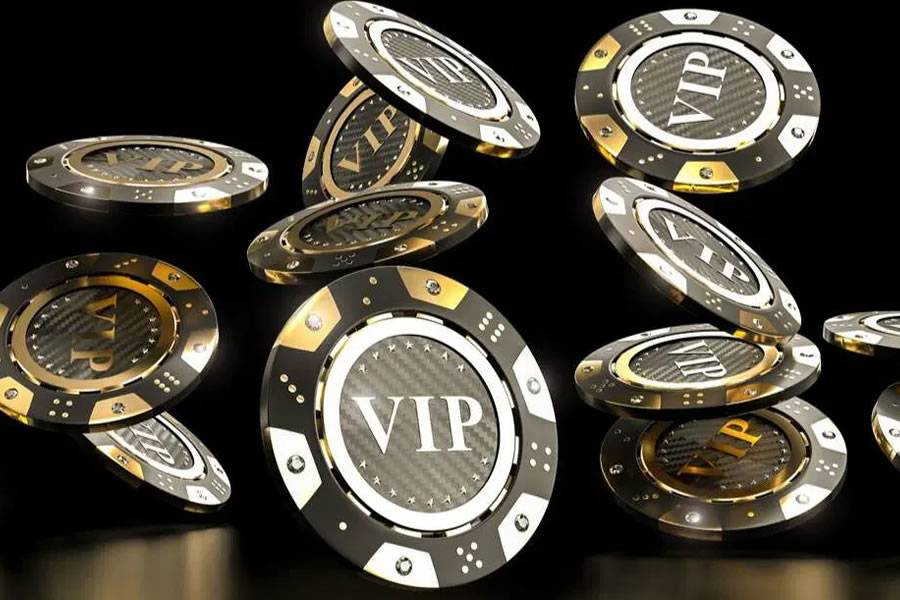The Hidden Power of Casino Loyalty Programs
- 09-04-2025
- Business
- Sponsored Article
- Photo Credit: iStock
Casino loyalty programs, also known as player’s clubs, have been an integral part of the gambling experience for decades. While the promise of free or discounted rooms, meals and other incentives is certainly enticing, there’s more at play beneath the surface when it comes to the tiered structure of these programs.
As gamblers move up to higher tiers, they enjoy an increasing sense of status, community and meaning that taps straight into the human psyche.
It’s All About Status
Gamblers crave status, just like everyone else. Reaching a new loyalty tier delivers an immediate shot of esteem similar to acquiring a new title at work or an upgraded travel class on an airplane. Even though the physical perks might be small, the emotional payoff can be significant. Higher tiers often come with dedicated hotlines, special entrances, member-only lounges and guaranteed availability during peak times. Special status gives players VIP treatment and makes them feel important.
Websites like Casino 666 are masters at creating tier names and benefits that ascend in desirability. From Sapphire to Titanium and beyond, the label itself carries a badge of honour. Loyalty tiers are tiered as pyramid shapes for a reason – there are many players at lower levels and progressively fewer players at higher levels. This makes top-tier status extremely aspiring while ensuring casinos can still profit.
Example Casino Loyalty Tiers and Benefits
|
Tier |
Requirements |
Benefits |
|
Gold |
$5,000 annual spend |
10% discount at restaurants |
|
Platinum |
$15,000 annual spend |
20% discount, priority reservations |
|
Diamond |
$50,000 annual spend |
Free rooms, concerts, cruises |
Community and Belonging
Humans are social creatures by nature. Loyalty programs tap into our deeply rooted need for community and belonging by creating VIP groups and events. Reaching an elite tier grants access to money-can’t-buy experiences with fellow luxury-tier players. Special cruises, dinners, parties and tournaments deliver bonding opportunities while also keeping players immersed in casinos.
The psychology runs even deeper though. Players assign strong social value to tiers and treat those of higher status with admiration, respect and envy. Top-tier players thus feel like celebrities or influencers within their casino’s ecosystem. They carry an air of prestige that sets them apart from the general population. Instead of being a nameless cog betting at slot machines, they have an identity and meaning tied to their gambler rank.
“I have Diamond status at Casino X but only Platinum at Casino Y” – snippets of conversation often heard among players comparing their tier achievements across different properties.
Loss Aversion Psychology
Loss aversion refers to people’s tendency to prefer avoiding losses over making equivalent gains. Once a player reaches a new loyalty plateau, they will fight extra hard not to slip down a tier and lose their coveted status. This plays right into casinos’ hands by incentivizing more play.
Consider a gambler who reaches Platinum by spending $15,000 in a year. To retain their Platinum badge for the next year, they may push themselves to spend $20,000 just to guarantee they meet the minimum requirements, even if they can rationally afford less. Players loathe the embarrassment of losing loyalty benefits or having to tell others they got knocked down a tier. Loss aversion combined with peer pressure drives additional spending.
Smart players can take advantage of this tier psychology too. By intentionally “gambling the tiers” and only playing enough to reach the next level, they enjoy the prestige without breaking the bank. Casinos allow tier status to be earned across multiple properties too, making it easier to ascend loyalty levels quickly.
VIP Treatment Drives Loyalty
The business objective behind loyalty tiers is building durable customer loyalty. According to Harvard research, increasing customer retention rates by just 5% can boost profits by 25% to 95%. Loyalty programs play into this by incentivizing players to concentrate more of their gambling budget at one casino rather than spreading play across multiple brands.
The longer a player remains with a casino, the more profitable they become over a lifetime. Loyalty tiers help accelerate this relationship by making players feel increasingly special the higher they ascend. Perks like personalized hosts, faster service and whiter glove treatment make it harder to take business elsewhere.
Players also risk losing sentimental value if they switch casinos. A Diamond tier player leaving Casino X for Casino Y would resent restarting from the bottom as a faceless newcomer. Years of cultivated status would disappear overnight. This creates a powerful psychological moat reinforcing loyalty.
“I could never leave this casino and throw away my Diamond status” – a refrain often heard from long-time patrons.
Final Thoughts
Loyalty programs will only grow in prominence as casinos fight rising competition and player acquisition costs. However, their true power reaches beyond points and freebies. Tiered status taps deeply into the human need to progress, win, belong and matter.
The race towards unattainable top tiers keeps players hungry and chasing the next level while dreading a downgrade. Instead of just transactional commodities, casinos become sticky communities wrapped up in social status and personal identity. This emotional connection lasts far longer than short-term discounts.
Understanding the psychology of loyalty tiers allows savvy players to maximize the personal value they extract. For casinos, mastering tier progression and prestige unlocks new profits. Ultimately used wisely, loyalty programs create win-wins improving lifetime engagement for committed patrons.
Gamble Responsibly: Gambling should be enjoyed as a form of entertainment, not a way to earn money. Always gamble within your financial means and set limits to stay in control. You must be 18 or older to participate in gambling activities. If you or someone you know has a gambling problem, seek help from organisations like FEJAR (Federación Española de Jugadores de Azar Rehabilitados) at www.fejar.org. Stay safe and gamble responsibly.
Other articles that may interest you...
Trending
Most Read Articles
1.
Featured Videos
A Vision of Elvis Tenerife Promo
- 10-05-2025
TEAs 2025 Highlights
- 17-11-2025



























































